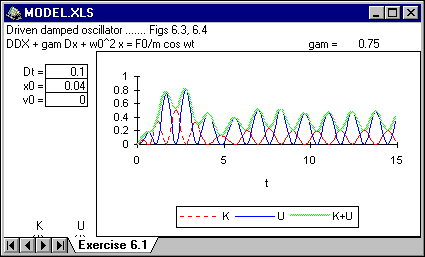These were the exercises in Dynamic Models in Physics. If you can find the book (out of print but perhaps still findable on Amazon.com) they are available to all interested parties (and their students, if any). You may copy and distribute as you wish.
Contact me if you think I can help dbarkley@nsimonco.com
Dynamic Models in Physics
Volume I: Mechanics
By
Frank Potter, University of California, Irvine
Charles W. Peck, California Institute of Technology

First-year students of mechanics are confronted with numerous physical processes easily represented as second-order differential equations. Dynamic Models in Physics
offers such students the opportunity to tangibly interact with Newton's laws of
motion and to observe the consequences of these laws even when analytic solutions
do not exist or are beyond the abilities of most beginning students.
Students learn how to
- Solve Newton's second law of motion numerically even in situations where no analytic
solution exists.
- Build and explore computer simulations of laboratory apparatus such as inclined
planes, colliding pucks, pendulums, pulleys, and other devices and examine the behavior
of conservative and nonconservative mechanical systems by dynamically altering physical
parameters to see new behavior.
- Solve problems including both translational and rotational motions.
Table of Contents
- CHAPTER 1: Getting Started
- CHAPTER 2: Motion
- CHAPTER 3: Forces
- CHAPTER 4: Work, Energy and Momentum
- CHAPTER 5: Rotational Motion
- CHAPTER 6: Periodic Motion
Exercises